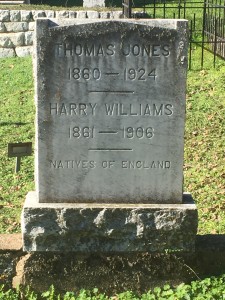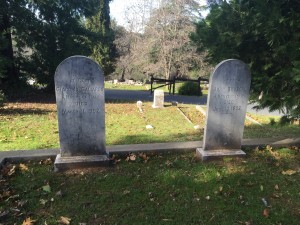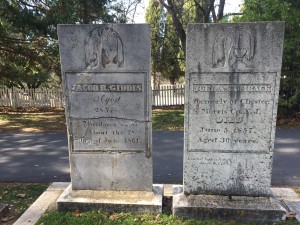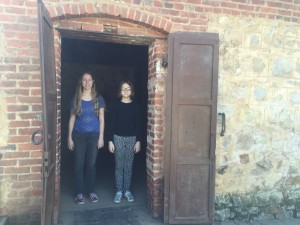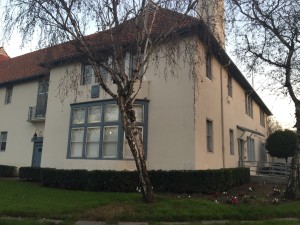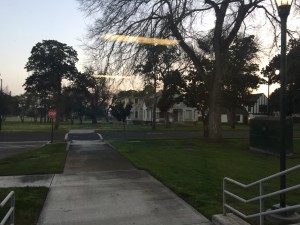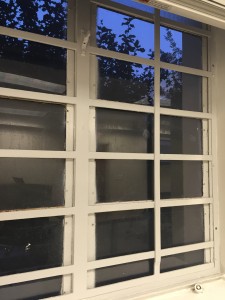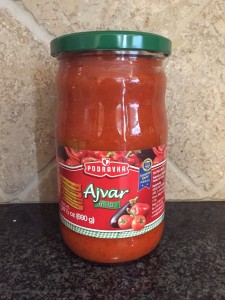If you’ve listened to the audio versions of Brute or Housekeeping, you already know how wonderful K.C. Kelly is, because he narrated them. Or maybe you’ve heard him read some other fantastic books, like Mary Calmes’ Frog, Ryan Loveless’s Ethan, Who Loved Carter, or Rowan Speedwell’s Love, Like Water. You can also hear him as Mark Twain. If you’ve listened to any of these, you know why I’m such a huge fan. So I’m really thrilled that K.C. agreed to answer my questions about his work! Please enjoy the interview, and I have a giveaway at the end.
Could you tell us a little about yourself?
An actor since my twenties (I’m now in my sixties), I’ve done more stage than anything else. I also taught acting for Long Island University, Victoria University, and the National Drama School of New Zealand: Toi Whakaari. Because I trained first in England (at the now defunct Webber-Douglas) and then moved to New York to study with Michael Howard, I’ve got a bit of trans-Atlantic “thing” going on.
How did you start doing book narration?
A very good friend who went from actor to lawyer to actor told me of his “conversion” to audiobooks. It got me thinking, why not moi? Andrew (he’s really been nice) at Dreamspinner Press listened to an audition and pointed me toward Love, Like Water. The rest is well…out there.
I’d love to learn a little more about your process for narrating. Do you begin by reading the entire book to yourself before you start narrating? How long does an average novel take you?
Reading the book is step one. That’s usually a one-day sit down and do it thing. Brute happened that way…I had to find out where Brute and Grey would go. When I’ve got the story down, then I underline (in different inks) the major character voices. While that percolates…I start to “think” voices. Read time – the actual time in front of the mic – is, for me, no more than two hours a day. Then come the edits and re-dos.
How do you choose what kind of voice a particular character will have?
A character’s history and their attitude/dialogue with others—they’re the signposts—they point in the direction to go for. Everybody I know—good and bad—gets a look in. And then there’s me, too. Obnoxious people draw on my reservoir of bile; nice folks get a friendlier version, but there’s always of bit of K.C. in there.
You’ve done a wide variety of accents and dialects. Do you use particular models for these? Are there some you especially enjoy doing—and are there some you dread?
Accents I’m familiar with come easily and “suggest” themselves. Accents I’m not good at—e.g. South African, Boston, New Orleans Patois, really mess my head. I’d love to “do” Australian, for example, but any native Ozzie would cringe.
Stuttering. You seem to end up doing a lot of it, and you do it so well. Is it something you like doing or is it a pain? How do you manage to so effectively convey the meaning and the emotion even for characters who have difficulty speaking?
They’re just people wanting to “talk.” When you understand some of the problems of the stutterer, you give them a voice. For most actors, they’re fun. It’s the Dustin Hoffmann Rain Man or Sean Penn in Sam, I Am.
What are some of the biggest challenges to doing narration work?
Separating lots of voices. When four or more people are in the same room—each needing a different way of talking—things get sticky for me. In “film speak” you seldom have a conversation where characters talk over one another (even if you would, normally)—you wait for your cue and get your line in clean. And that’s not easy, especially if there’s a party or an argument going on. It’s a bit like working with a band you haven’t played with. One or two characters, no sweat; throw in a narrative voice, still cooking. But in a “crowd” you can lose the groove and that can get messy. You’re paying attention to tone, pace, and plot—but a number of voices, playing different things require careful orchestration.
When you’re not narrating, you’re working with a theatre troupe. Can you tell us a little about that?
EnsembleImpact was created to bring New Zealand plays to New Zealand high schools. I co-founded the company and, for the first five years, was chief cook and bottle-washer. As the company caught on, I relinquished one job after another, concentrating on dramaturgy and direction.
What do you like to read for fun?
I’m big on non-fiction. Just about any war Antony Beevor touches on are favourites. Barbara Ehrenreich and Malcom Gladwell have spent a lot of time here along with David Sedaris. I enjoyed Michael Pollan’s The Botany of Desire, too. “Fictionally,” I loved (and wanted to be the old guy in) Sara Gruen’s Water for Elephants and was fascinated by Abraham Verghese’s Cutting for Stone.
Is New Zealand as gorgeous in person as it looks on film?
It truly is. It’s a very small country—4 ½ million—but the scenery between the mountains and both shorelines is wondrous. From north to south (think Miami to Boston) you encounter alpine mountains, fiords, volcanoes, beech forests, semi-tropical wetlands, hundreds of beaches, rushing rivers, etc. The U.S. has it all—it just takes days to get from place to place—but in NZ you can, literally, ski in the morning and drive to a beach for a swim by afternoon.
Do you have a dream project?
More movies and more Shakespeare. I’ve had the good fortune to do Lear, Shylock, and MacDuff for one theatre or another and would love to add Prospero and Claudius to the mix. (Too late for Hamlet!) Screen wise—I’m connected to a pair of film-makers Andrea Bosshard and Shane Loader from Torchlight Films. We shot Hook, Line and Sinker a couple of years ago and are just finishing The Great Maiden’s Blush early next month. In Sinker I played a truck driver; in Blush a Croatian opera singer.
Is there anything else you’d like to tell us?
I was very ill about eight years ago with an AVM (arteriovenous malformation) which led to a craniotomy and several years of post-surgical rehabilitation. Reading and being read to were wondrous things in my recovery. In “reading” a book, you want to be true to the author’s voice and, like a good storyteller, lead the listener through the tale. I like storytelling and I’m fortunate to work with several authors who really have good stories to tell.
≈≈≈≈≈≈≈≈≈≈≈≈≈≈≈≈≈≈≈
How about a giveaway? All you have to do to enter is sign up for my (very occasional and guaranteed non-spammy) newsletter. Go here to sign up: http://eepurl.com/bau3S9 (or use the form on the sidebar to the right—->) . Then comment on this post, leaving the email address or name you used to sign up. One randomly chosen winner will receive:
- The wonderful audiobook version of Brute
- A $10 Dreamspinner gift certificate
- An autographed set of Travis and Drew trading cards
- The ebook version of Motel. Pool.
Contest ends Wednesday, February 11, at 5pm PST.


